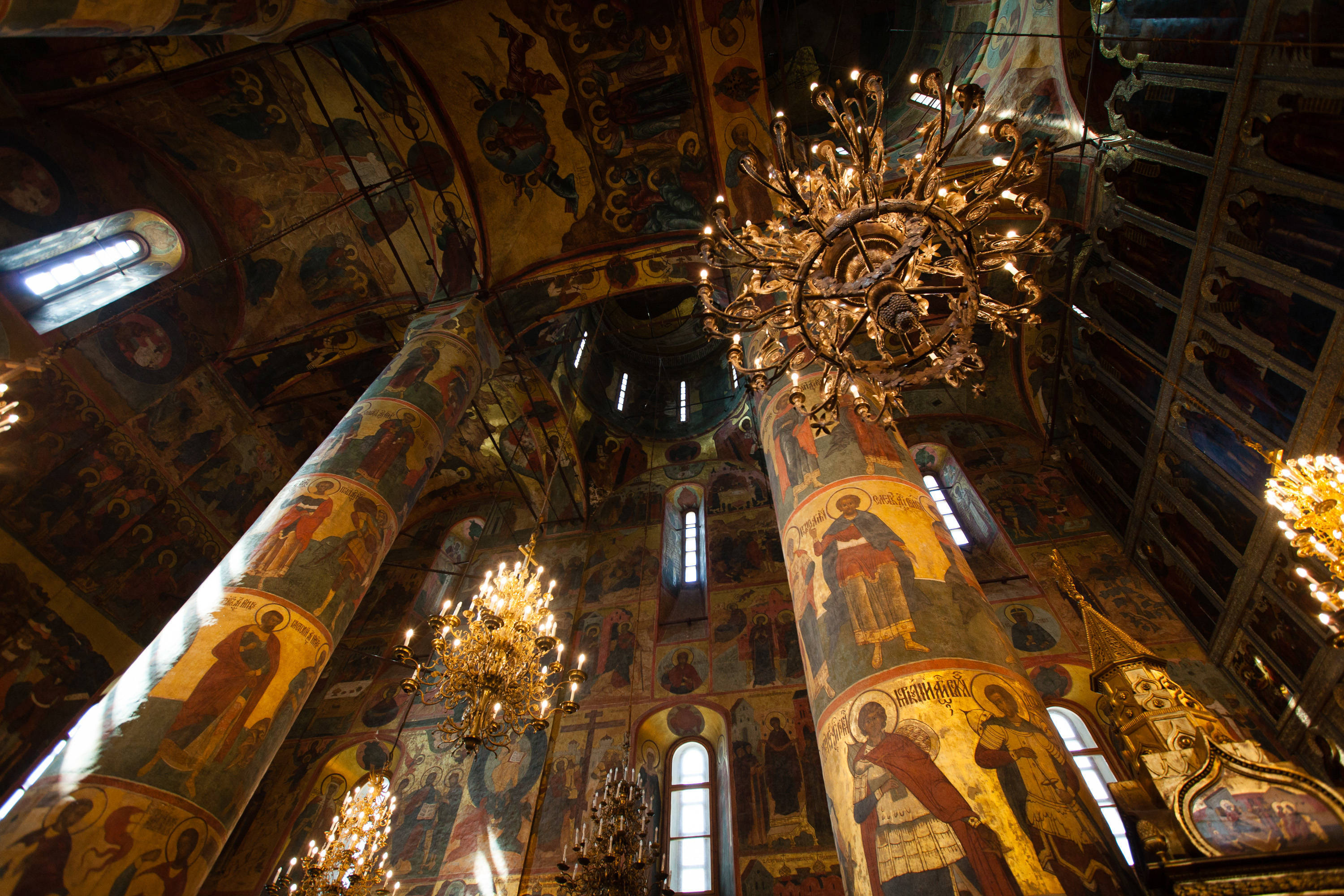

Even as Russia claimed to be the political successor of the Byzantine Empire, in various ways all of eastern Europe was its cultural successor. The musical traditions of Russia, Ukraine, Romania, and the rest of eastern Europe find their origins in the liturgical music of Greek Orthodoxy, just as the music of Western Europe looks back to Gregorian Chant.
In the ninth century, the Byzantine Emperor had sent two brothers named Cyril and Methodius to spread Christianity among the Slavic people of eastern Europe. In order to translate the Bible, they learned the native Slavonic language and created an alphabet (called Cyrillic) for it. Slavonic soon replaced Greek as the liturgical language of eastern Europe.
Early Slavonic liturgical music was characterized by sustained drones and isons, and later, drone organum. As it developed, it came to include rich Aeolian harmonies and a vocal style with an emphasis on clarity and tone over complex rhythm and polyphony.
Και Εδωκεν Την Γην (Mount Athos Monastery)
O Pure Virgin (Valaam Monastery)
Agni Parthene (Valaam Monastery)
Душа моя прегрешная (Sirin Ensemble)